Autism Awareness Month. I’m personally sick of Autism Awareness Month. Blue lights, blue shirts, blue ties. Blue Blue Blue. Well, actually, the color does match my mood this month. That’s right. I’m blue about autism awareness. Not happy. Things are not all rosy or peachy when it comes to autism. And I’m not suggesting a change of hue to red or tangerine. I’ve just had enough of awareness. Awareness is futile. I want it to stop. I want the prettification and normalization of autism to go away. Awareness has gone awry.
In this two part blog, I’ll be offering some insight into why awareness month stinks. I have a different view of what awareness is; what it’s bringing to the table and what it’s not. In part two, I’ll give an honest explanation about why I choose not to celebrate autism awareness month or World Autism Day anymore. I used to. But I’ve changed, and my reasons might surprise you.
Part One
I’ve seen 15 Autism Awareness Months come and go. Prior to my son’s diagnosis of autism, I hadn’t heard of Autism Awareness Month. I hadn’t really heard of autism. Like so many other moms I know, my knowledge of autism was derived from the film Rainman. Dustin Hoffman’s portrayal of Raymond Babbitt in Barry Levinson’s film 30 years ago “taught” me that being autistic meant having limited language and interpersonal skills along with keen observational talents and savant tendencies. That’s as far as my (misguided) autism awareness went.
 When the autism puzzle piece ribbon came out in 1999 it was not showing up everywhere. Seems to me it was showcased at autism conferences and splashed around autism websites, but that’s it. Around 2006 it gained more attention. Possibly a side effect of the growing epidemic. I have autism ribbons around the house…like on a pair of earrings, on the cover of a pamphlet or two, and on a car window (more to alert police and firefighters that the vehicle contains someone with autism).
When the autism puzzle piece ribbon came out in 1999 it was not showing up everywhere. Seems to me it was showcased at autism conferences and splashed around autism websites, but that’s it. Around 2006 it gained more attention. Possibly a side effect of the growing epidemic. I have autism ribbons around the house…like on a pair of earrings, on the cover of a pamphlet or two, and on a car window (more to alert police and firefighters that the vehicle contains someone with autism).
When autism came into our lives in 2002, I began learning about awareness and advocacy. And what a little awareness machine I was. I bought t-shirts, rubbery bracelets in light blue, car magnets. Just about anything to go on an awareness mission. When it felt like little else could be done to help my child (the early 2000’s weren’t exactly advanced in autism care) there was always awareness-raising to do. I felt like I was contributing something. Maybe I was and maybe I wasn’t.
As years rolled by and awareness months came and went, I worked hard as did my friends in trying to attract attention to the autism rates which kept mysteriously climbing. What did we do? Let’s see…there was blue clothing and lots of it. Hand-painted t-shirts. Ribbons and rubber awareness bracelets. Autism walks. Fundraisers. Displays in my classroom. Lawn signs. Published articles. Radio interviews. I’m not patting myself on the back. It’s just what I did to participate in what was an important month to me and my family. But as time went on, I began realizing that awareness missions weren’t doing much. It’s not that I wanted to get anything out of these efforts. But I observed that the real and true message about autism was not getting sent. The message began to look like some whitewashed version of autism, calling it a spectrum and conveniently leaving out the word disorder. The message was cleaned up like a house on the market. Phrases like “special talents” and “unique abilities” began infiltrating the dialogue. Images of shiny happy people began showing up. Autism was getting some kind of makeover in the mainstream media.
Still wanting to advocate and raise awareness, I joined forces with some folks and worked on a city proclamation to recognize Autism Awareness Day and Month in Napa. We ended up getting it done, and it felt great. But what did it actually accomplish? Soon after the proclamation, I asked the city to participate in Autism Speaks’ Light It Up Blue campaign. I provided links and information. I would have been proud back then to see my city showing support of the autism community. The city said they didn’t have an appropriate landmark to use. I suggested a few places: the Grape Crusher statue along Hwy. 29, the First St. Bridge, the Oxbow Public Market. We’ll get back to you, they said. Despite my squeaky wheelness, they never did. And another time, I tried to get a booth at the Friday night Chef’s Market in order to spread awareness. What a major rejection that was; I was told they didn’t do that kind of thing as the event was mostly for tourists and really about food. (It was a true locals’ event with arts, crafts, live bands, and a gymnastics area for kids, but, whatever).
I believe that a majority of parents facing autism get a little resentful this month because living with autism is an intensely difficult year-round prospect, which is not reflected in any autism awareness campaigns. It’s 24-7-365 ordeal, where many parents experience high degrees of anxiety over what will become of their child when they are gone. The struggles don’t lighten up or end in April. The families are not helped by people wearing blue for a day. Did you know that only 4% of Autism Speaks’ budget goes to help families affected by autism (which is pretty lousy). Yet AS is considered the premier organization for all things ASD. They do in fact sponsor and promote Light It Up Blue. I guess they picked the color because, so I’ve read, more boys were affected by autism than girls. I wonder how that makes families feel who have daughters with autism.
So as the awareness month descends upon America, kids with autism continue to face numerous health issues, behavioral challenges, sensory difficulties, and isolation. Parents of these children struggle to support their kids and heal their pain. They too face their own stress-related illnesses, emotional battles, and, yes, isolation. They are struggling to stay above water while handling ABA therapy, medical appointments, special diets, OCD rituals, and IEP meetings. Medical appointments you say? Yes. The real and true autism – not the sugar coated version tossed around like parade candy by mainstream media – is a medical problem. Autism is a disorder. It’s in the official name. It’s a medical illness. And unlike cancer, heart disease, or diabetes, autism does not have a known and effective course of treatment for all the health-related complications. It’s not like the diagnosis of autism comes in, followed by a prescribed course of treatment. There are biomedical interventions, but from one health care professional to the next, you’re likely to be given very different options for addressing the physical symptoms. Almost two decades of research and ongoing relationships with about 40 different specialists has shown me that the approach for healing a child from autism spectrum disorder is like playing darts. Problem is, very few hit the bullseye.
I realize some don’t acknowledge that medical issues exist in those with ASD, or that autism is a chronic illness with vast autoimmune aspects. There is a pervasive attitude that autism equals quirkiness or that having autism just means you are wired differently. I don’t see it that way at all. I certainly don’t mean to offend anyone who believes that. Quite honestly, I have given abundant thought to the idea that what my son is dealing with is not ASD at all but rather an unnamed, unclassified disorder that has some threads of connection to autism. Until someone discovers “it” and renames it, I have to go with what DSM calls it. Otherwise, it’s just too complicated to explain to people.
So what is awareness about autism bringing to the table? In my opinion, an empty plate. You see, in my parental opinion, simply making people aware that autism exists in the world is, at this point in time, futile. If you don’t know autism affects a whopping amount of children globally, then you’ve been under a rock. What does awareness for autism do? Pink ribbons and paraphernalia for breast cancer have the power to generate all kinds of reactions and support everywhere you go. That’s fantastic! The Ice Bucket Challenge of 2014 garnered nationwide support and $115 million in donations for ALS. Awesome!! If anyone is paying attention to the numbers, the autism rate climbed from 1 in 10,000 in 1980, to 1 in 88, in just 28 years! Currently, it’s estimated that 1 in 36 children in the U.S. has autism. This is a colossal increase! (No, it’s not better diagnosis). Has any autism awareness campaign out there generated $115 million in one summer alone for the right kind of research? Nowadays, it seems that everyone knows someone affected by autism. Awareness of autism in our country is not needed. What is needed is action.
 Looking back on my own awareness efforts, I see myself as a hamster on a wheel. I spun until I was out of breath. No. No more awareness activities for me. It is time for action. Fortunately, there are many people out there with similar thoughts. Action IS what is needed. And I’m certainly not talking about the act of wearing a blue shirt or making the autism ribbon your profile picture. It’s about true, sincere action.
Looking back on my own awareness efforts, I see myself as a hamster on a wheel. I spun until I was out of breath. No. No more awareness activities for me. It is time for action. Fortunately, there are many people out there with similar thoughts. Action IS what is needed. And I’m certainly not talking about the act of wearing a blue shirt or making the autism ribbon your profile picture. It’s about true, sincere action.
 Here are some ideas: Donating to the Age of Autism or to TACA. Volunteering at an autism event in your community. Bringing school supplies to a special education classroom. Offering a parent a break by watching their child for a while. Making dinner for a family with autism. Signing up to receive action alerts with the Autism Society. Reading a book about the science of autism. Exploring some of the studies available online that deal with the connection between a toxic environment and ASD. Checking out one of the many documentaries about ASD. Helping train a Canine Companion for a family with a child with ASD. Offering to teach the child or teen how to shoot a basket or jumprope. Volunteering at an equestrian center which does hippotherapy. Using natural lawn and garden products instead of pesticides. Try Googling Dr. William Thompson or Dr. Brian Hooker and read about scientific fraud and malfeasance. If you’re really brave and want to be immersed, how about attending a conference like AutismOne or TACA’s National Autism Conference? And maybe, just maybe, while you are doing any of these things, wear a pair of blue and pink socks if it helps your mood.
Here are some ideas: Donating to the Age of Autism or to TACA. Volunteering at an autism event in your community. Bringing school supplies to a special education classroom. Offering a parent a break by watching their child for a while. Making dinner for a family with autism. Signing up to receive action alerts with the Autism Society. Reading a book about the science of autism. Exploring some of the studies available online that deal with the connection between a toxic environment and ASD. Checking out one of the many documentaries about ASD. Helping train a Canine Companion for a family with a child with ASD. Offering to teach the child or teen how to shoot a basket or jumprope. Volunteering at an equestrian center which does hippotherapy. Using natural lawn and garden products instead of pesticides. Try Googling Dr. William Thompson or Dr. Brian Hooker and read about scientific fraud and malfeasance. If you’re really brave and want to be immersed, how about attending a conference like AutismOne or TACA’s National Autism Conference? And maybe, just maybe, while you are doing any of these things, wear a pair of blue and pink socks if it helps your mood.
I’d be okay with awareness if it focused on the truth about what these children experience. If a light could shine on the myriad medical issues and inspire action, THAT could be a game changer. Could the spotlight be turned on the beleaguered and sleep deprived parents? Maybe this could generate action and/or funds for purposeful research and targeted treatments. You know those television commercials for the SPCA that play sorrowful piano music while slow-motion images of shivering sad-eyed dogs and cats go by? It goes straight to your heart whether or not you are an animal lover. ASD needs a commercial like that. It’s not to be all “woe is me.” It’s to show the depth of the struggle and bring the truth of autism to the surface. I think there is a whole other (all too common) side to autism that most people don’t see. If they don’t live it, they don’t know it. And that’s okay; just don’t deny it because you don’t see it around you.
There are children and teens with autism who are bruised and battered from self-injurious behaviors. I’ve heard accounts of children upending their bedroom furniture in fits of rage in the middle of the night. There are children and teens with autism who are being physically and sexually abused by their own teachers or bus drivers during the school day and can’t say anything because of their speech apraxia. There are young children and older kids who either don’t have bowel movements for weeks, or have so much diarrhea that their parents can’t keep up with the soiled clothes. There are kids who spend the days and nights moaning and wailing in pain. Kids who won’t eat. Kids who throw food. Kids who smear feces. Kids who attack others. Kids who bite themselves. Kids who jump fences and get hit by cars or drown in pools. Kids who run into busy streets. Kids who have no friends. Kids who don’t sleep. Kids who rip paper nonstop. Kids who bang their heads against walls. Some may think that on one end of the autism spectrum, where Asperger’s falls, life is easier. I don’t know about that. Seems to me there are too many teens and young adults with Asperger’s or “high functioning autism” who are bullied, shunned, and ridiculed. Maybe they have physical pain, but for sure there’s mental pain where there’s bullying. I doubt that those individuals believe an awareness month will help them. And how exactly does promoting awareness help the families beset by difficulties like the ones described here? This is why Autism Awareness Month just ticks me off now.
Awareness by itself has gotten us nowhere. Lighting it up blue doesn’t cut it. Quite frankly, my son and all the kids around the world living with autism spectrum disorder deserve more than shimmery blue water spilling over Niagara Falls for a night.

Getty Images
-
Look for Part Two in the coming days.
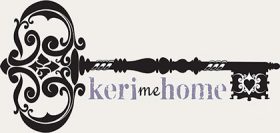
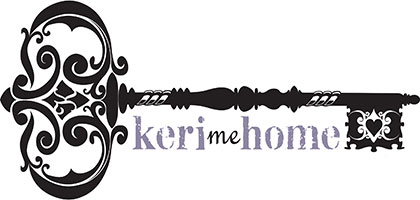

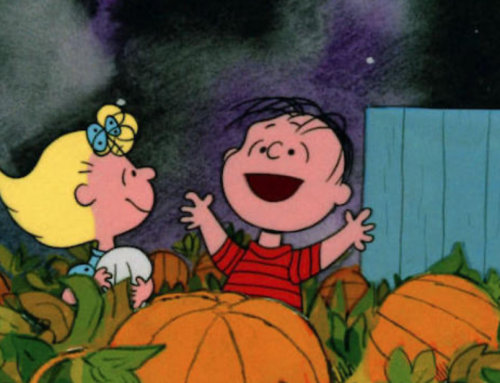
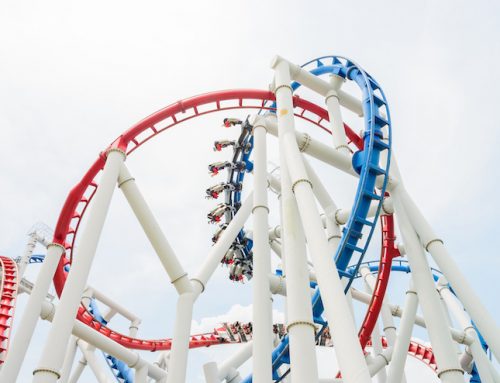
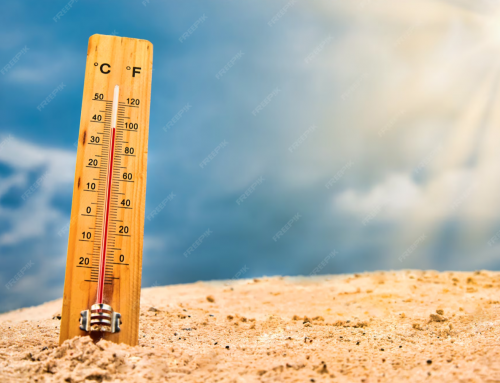


YES, YES, YES!!! 👏
This is beautifully written and so well researched!! Thank you for putting my autism-awareness-month-eye-roll into words.
Wonderfully written and so honest. Thank you for sharing. Our kids deserve more!
Wow, what a read. That was so eloquently put Keri and I, as a parent with a child that has autism, could relate with so much of what you said. I guess the sad part about awareness is we don’t really hear too much about it unless a celebrity has been affected. With the rates of autism on the rise you think we would hear more, but we don’t. So why is that? Thank you for putting your thoughts out there for all of us. Can’t wait to read part 2!!
wow this was a tough one to read…so honest and true. good one; I hope it will generate results! : )